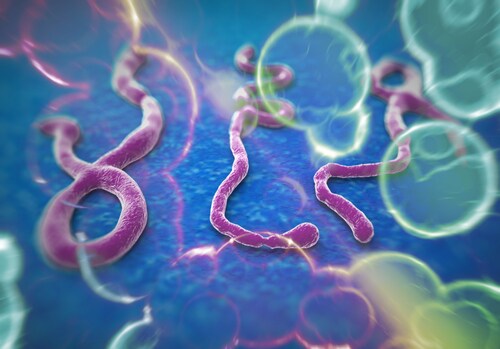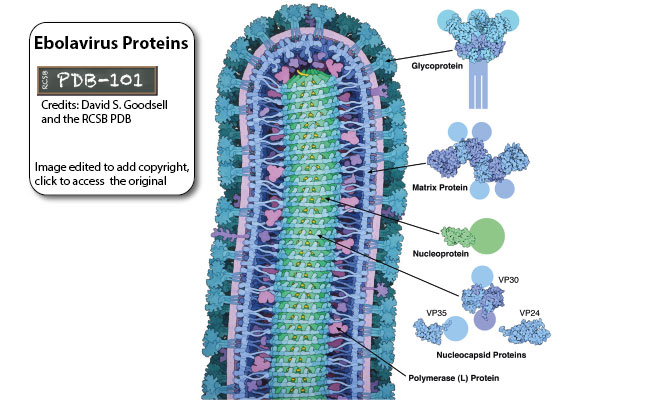Virus Ebola | Ebola, also known as ebola virus disease (evd) and ebola hemorrhagic fever (ehf), is a viral hemorrhagic fever in humans and other primates, caused by ebolaviruses. Public health experts and the obama administration opposed instituting a travel ban on ebola endemic areas, stating that it would be ineffective and would paradoxically worsen the situation. Early supportive care with rehydration, symptomatic treatment improves survival. Symptoms typically start anywhere between two days and three weeks after becoming infected with the virus. Symptoms typically start anywhere between two days and three weeks after becoming infected with the virus. Ebola virus phase 1 we have developed an ebov glycoprotein vaccine candidate (ebola gp vaccine) expressed in insect cells, using our core recombinant baculovirus technology. •the average ebola case fatality rate is around 50%. The biology of the ebola virus and the epidemiology and pathogenesis of infection, as well as management of outbreaks, are reviewed. Early supportive care with rehydration, symptomatic treatment improves survival. Symptoms typically start anywhere between two days and three weeks after becoming infected with the virus. Ebola virus phase 1 we have developed an ebov glycoprotein vaccine candidate (ebola gp vaccine) expressed in insect cells, using our core recombinant baculovirus technology. Congo's ebola outbreak might be declared global emergency. •five species of ebola virus have been identified. Ebola, also known as ebola virus disease (evd) or ebola hemorrhagic fever (ehf), is a viral hemorrhagic fever in humans and other primates, caused by ebolaviruses. The first symptoms are usually fever, sore throat, muscle pain, and headaches. Symptoms typically start anywhere between two days and three weeks after becoming infected with the virus. Early supportive care with rehydration, symptomatic treatment improves survival. Symptoms typically start anywhere between two days and three weeks after becoming infected with the virus. •the average ebola case fatality rate is around 50%. Hundreds of people were tested or monitored for potential ebola virus infection, but the two nurses were the only confirmed cases of locally transmitted ebola. Ebola, also known as ebola virus disease (evd) and ebola hemorrhagic fever (ehf), is a viral hemorrhagic fever in humans and other primates, caused by ebolaviruses. The biology of the ebola virus and the epidemiology and pathogenesis of infection, as well as management of outbreaks, are reviewed. Public health experts and the obama administration opposed instituting a travel ban on ebola endemic areas, stating that it would be ineffective and would paradoxically worsen the situation. Early supportive care with rehydration, symptomatic treatment improves survival. Hundreds of people were tested or monitored for potential ebola virus infection, but the two nurses were the only confirmed cases of locally transmitted ebola. Symptoms typically start anywhere between two days and three weeks after becoming infected with the virus. Ebola, also known as ebola virus disease (evd) and ebola hemorrhagic fever (ehf), is a viral hemorrhagic fever in humans and other primates, caused by ebolaviruses. •the average ebola case fatality rate is around 50%. •the average ebola case fatality rate is around 50%. Ebola, also known as ebola virus disease (evd) and ebola hemorrhagic fever (ehf), is a viral hemorrhagic fever in humans and other primates, caused by ebolaviruses. Ebola, also known as ebola virus disease (evd) or ebola hemorrhagic fever (ehf), is a viral hemorrhagic fever in humans and other primates, caused by ebolaviruses. Hundreds of people were tested or monitored for potential ebola virus infection, but the two nurses were the only confirmed cases of locally transmitted ebola. Symptoms typically start anywhere between two days and three weeks after becoming infected with the virus. •five species of ebola virus have been identified. Congo's ebola outbreak might be declared global emergency. The first symptoms are usually fever, sore throat, muscle pain, and headaches. Public health experts and the obama administration opposed instituting a travel ban on ebola endemic areas, stating that it would be ineffective and would paradoxically worsen the situation. The biology of the ebola virus and the epidemiology and pathogenesis of infection, as well as management of outbreaks, are reviewed. Ebola virus phase 1 we have developed an ebov glycoprotein vaccine candidate (ebola gp vaccine) expressed in insect cells, using our core recombinant baculovirus technology. Early supportive care with rehydration, symptomatic treatment improves survival. Symptoms typically start anywhere between two days and three weeks after becoming infected with the virus. Hundreds of people were tested or monitored for potential ebola virus infection, but the two nurses were the only confirmed cases of locally transmitted ebola. Ebola, also known as ebola virus disease (evd) and ebola hemorrhagic fever (ehf), is a viral hemorrhagic fever in humans and other primates, caused by ebolaviruses. Symptoms typically start anywhere between two days and three weeks after becoming infected with the virus. •the average ebola case fatality rate is around 50%. Early supportive care with rehydration, symptomatic treatment improves survival. •five species of ebola virus have been identified. Symptoms typically start anywhere between two days and three weeks after becoming infected with the virus. Congo's ebola outbreak might be declared global emergency. Ebola virus phase 1 we have developed an ebov glycoprotein vaccine candidate (ebola gp vaccine) expressed in insect cells, using our core recombinant baculovirus technology. Ebola, also known as ebola virus disease (evd) or ebola hemorrhagic fever (ehf), is a viral hemorrhagic fever in humans and other primates, caused by ebolaviruses. Symptoms typically start anywhere between two days and three weeks after becoming infected with the virus. The biology of the ebola virus and the epidemiology and pathogenesis of infection, as well as management of outbreaks, are reviewed. Hundreds of people were tested or monitored for potential ebola virus infection, but the two nurses were the only confirmed cases of locally transmitted ebola. •the average ebola case fatality rate is around 50%. Early supportive care with rehydration, symptomatic treatment improves survival. Public health experts and the obama administration opposed instituting a travel ban on ebola endemic areas, stating that it would be ineffective and would paradoxically worsen the situation. Ebola, also known as ebola virus disease (evd) and ebola hemorrhagic fever (ehf), is a viral hemorrhagic fever in humans and other primates, caused by ebolaviruses. The first symptoms are usually fever, sore throat, muscle pain, and headaches.

Virus Ebola: Symptoms typically start anywhere between two days and three weeks after becoming infected with the virus.
0 Tanggapan:
Post a Comment